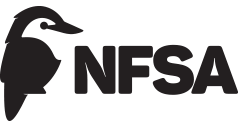This clip chosen to be PG
Clip description
Norman Lindsay’s The Magic Pudding is one of our best-loved children’s books and the central character one of our great Australian antiheroes.
Curator’s notes
The children’s book The Magic Pudding by Norman Lindsay was published in 1918.
It tells the adventures of the koala Bunyip Bluegum who goes in search of his missing parents. When Bunyip Bluegum finds he can no longer live with his uncle’s annoying whiskers, he sets out to find his own place in the world. Rather quickly he meets Sam Sawnoff (a penguin) and Bill Barnacle (a man with a long white beard) and their pudding, Albert.
Albert is a magic pudding, which magically renews itself whenever part of it is eaten. Albert can taste like steak and kidney pie, or plum duff, or any number of things. Albert is rather cranky and his goal in life seems to be to get people to eat as much of him as possible. A gang of pudding thieves stalk the magic pudding, who is protected by his companions.
The pudding owners are in constant conflict with a couple of pudding thieves, who frequently succeed in stealing Albert for short bursts of time, until they are set upon and beaten up by the Society of Pudding Owners.
The story is a variation on the ‘three wishes’ theme common in fairy stories.
Teacher’s notes
developed for NFSA digital learning 
WARNING – the opening sequence of this clip contains nudity. Teachers can avoid screening this sequence by downloading the clip and playing it from Warren Brown’s narration to camera at the State Library of New South Wales that commences, 'Like many Australian kids I grew up in love with The Magic Pudding'.
Classroom Activities
- What is The Magic Pudding?
- Why was it created?
- Why has it been a popular book?
- How do the illustrations show the skill of the artist Norman Lindsay?
- What is meant by an ‘antihero’?
- Who is an example of an antihero today?
- Why does the character of the Pudding appeal to many people?
- Look at an illustrated version of the book. What is the main purpose of the illustrations – to reflect the text, or to add additional information and ideas to the story? Describe the:
- style
- characterisation
- use of colour
- use of black-and-white in the illustrations.
- The Magic Pudding was a popular book from its first publication. Is it likely still to appeal to its main audience today? Explain your reasons.
- The Magic Pudding was published in 1918; it was created as an animated film in 2000. Watch the film and compare the key features with those of the illustrations. Also discuss the filmic elements in it: the nature of the voices, the animation, the use of music, the adaptation and modernisation of the language and the general style.
- What are the main strengths and weaknesses of the two different media?
Norman Lindsay’s Posters
- Norman Lindsay was a popular cartoonist and a major propaganda artist during the First World War. Go to the Australian War Memorial site and enter Norman Lindsay and First World War into the collection search. You will find images of recruiting/patriotic cartoons. Look at these posters and discuss:
- Who he presents in the posters
- How he characterises these people
- What messages he is presenting
- The likely reactions of a variety of people to those posters, such as a man who has joined the army, a wounded soldier back from the war, the mother of a young man who is of eligible age, a man who has decided that he will not join the army, and the father of a soldier at the front.
- Could Lindsay’s posters be seen as uniting the community, dividing it, or both? Discuss your ideas.
Thanks to the generosity of the rights holders, we are able to offer 'The Magic Pudding' illustrations from the documentary National Treasures – 'The Magic Pudding' Illustrations as a high quality video download.
To play the downloadable video, you need QuickTime 7.0, VLC, or similar.
You must read and agree to the following terms and conditions before downloading the clip:
australianscreen is produced by the National Film and Sound Archive. By using the website you agree to comply with the terms and conditions described elsewhere on this site. The NFSA may amend the 'Conditions of Use’ from time to time without notice.
All materials on the site, including but not limited to text, video clips, audio clips, designs, logos, illustrations and still images, are protected by the Copyright Laws of Australia and international conventions.
When you access australianscreen you agree that:
- You may retrieve materials for information only.
- You may download materials for your personal use or for non-commercial educational purposes, but you must not publish them elsewhere or redistribute clips in any way.
- You may embed the clip for non-commercial educational purposes including for use on a school intranet site or a school resource catalogue.
- The National Film and Sound Archive’s permission must be sought to amend any information in the materials, unless otherwise stated in notices throughout the Site.
All other rights reserved.
ANY UNAUTHORISED USE OF MATERIAL ON THIS SITE MAY RESULT IN CIVIL AND CRIMINAL LIABILITY.
This clip is available in the following configurations:
| File name | Size | Quality | Suitability |
|
themagic1_pr.mp4
|
Large: 33.9MB |
High |
Optimised for full-screen display on a fast computer. |
|
themagic1_bb.mp4
|
Medium: 16.0MB |
Medium |
Can be displayed full screen. Also suitable for video iPods. |
Right-click on the links above to download video files to your computer.
Thanks to the generosity of the rights holders, we are able to offer this clip in an embeddable format for personal or non-commercial educational use in full form on your own website or your own blog.
You must read and agree to the following terms and conditions before embedding the clip:
australianscreen is produced by the National Film and Sound Archive. By using the website you agree to comply with the terms and conditions described elsewhere on this site. The NFSA may amend the 'Conditions of Use’ from time to time without notice.
All materials on the site, including but not limited to text, video clips, audio clips, designs, logos, illustrations and still images, are protected by the Copyright Laws of Australia and international conventions.
When you access australianscreen you agree that:
- You may retrieve materials for information only.
- You may download materials for your personal use or for non-commercial educational purposes, but you must not publish them elsewhere or redistribute clips in any way.
- You may embed the clip for non-commercial educational purposes including for use on a school intranet site or a school resource catalogue.
- The National Film and Sound Archive’s permission must be sought to amend any information in the materials, unless otherwise stated in notices throughout the Site.
All other rights reserved.
ANY UNAUTHORISED USE OF MATERIAL ON THIS SITE MAY RESULT IN CIVIL AND CRIMINAL LIABILITY.
Copy and paste the following code into your own web page to embed this clip:




 Share
Share




